.png)
Swedish Massage
The Swedish massage is one of the most common types of massages you can get. It is performed to energize the body and improve overall health. This type of massage involves actions like percussion, kneading, vibration, tapping and rolling. Swedish Massages are a great way to relax . A massage involves manipulating the muscles and joints to relieve stress or pain. This is achieved by relaxing tight muscles and promoting blood circulation.
.jpg)
Deep Tissue Massage
Deep tissue massage targets chronic tension in muscles that lie far below the body’s surface. Deep muscle techniques involve slow strokes, direct pressure or friction movements that go across the muscle grain.
When there is chronic muscle tension or injury, there are usually adhesions (bands of painful, rigid tissue) in muscles, tendons, and ligaments. Adhesions can block circulation and cause pain, limited movement, and inflammation. Deep tissue massage works by physically breaking down these adhesions to relieve pain and restore normal movement.
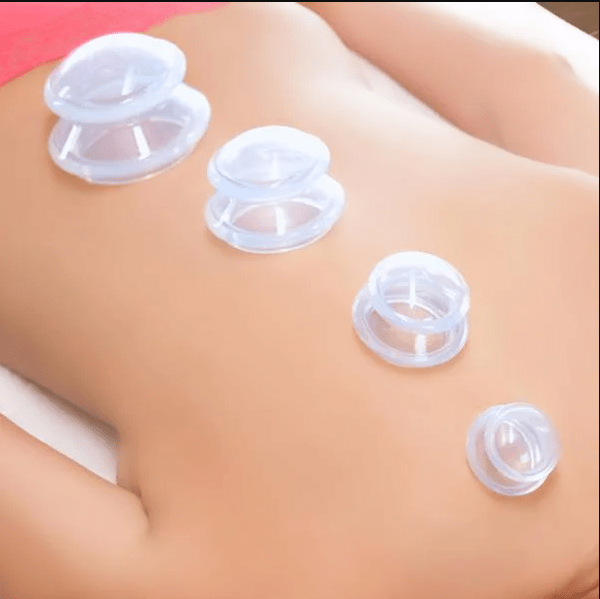
Orthopedic Cupping
Cupping is the use of glass or silicone cups with a manual pump to create a negative pressure on the skin and underlying tissue. This negative pressure allows for the lifting of the layers of skin to improve connective tissue mobility and blood flow. The skin is comprised of several layers covering the underlying fascia and muscles. These layers should move fluidly together to achieve optimal function.
Conditions that can be treated with cupping:
Trigger points
Muscle spasms
Post-surgical recovery and scar mobilization
Postural imbalances
Orthopedic and Sports Medicine Injuries
Soft tissue contractures
Tendinopathy
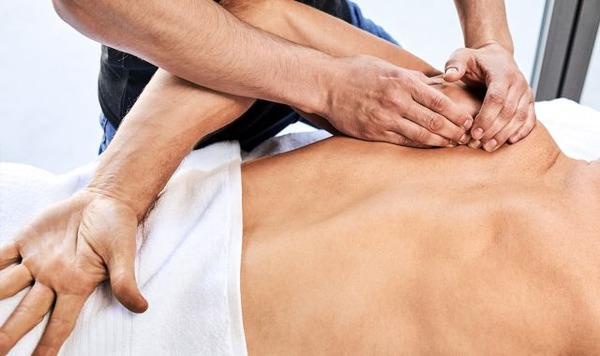
Sports Massage
Sports massage is an advanced massage therapy that helps athletes both prevent and recover from injuries. It helps keep the body in top form, by manipulating strained muscle groups, increasing flexibility, and helping the whole body to relax.
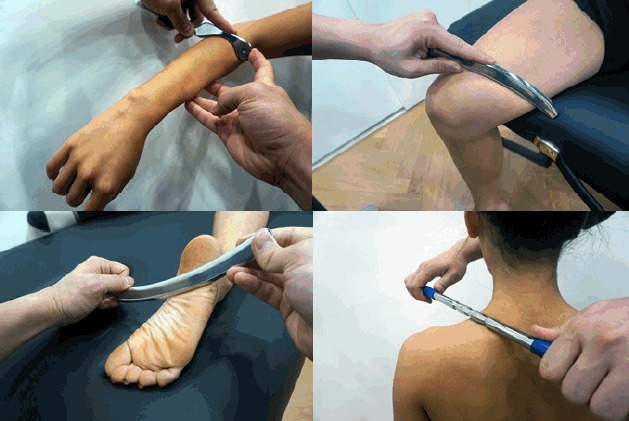
IASTM Therapy
Instrument-Assisted Soft Tissue Mobilization
Effective treatment for muscle, ligament and tendon injuries.
Instrument assisted soft tissue mobilization (IASTM) is a skilled myofascial intervention used for soft-tissue treatment. It is based on the principles of James Cyriax cross-friction massage.
It is applied using instruments that are usually made of stainless steel with bevelLed edges and contours that can conform to different body anatomical locations and allows for deeper penetration.
It is used for the detection and treatment of soft tissue disorders.
A proposed description for IASTM is “a skilled intervention that includes the use of specialized tools to manipulate the skin, myofascia, muscles, and tendons by various direct compressive stroke techniques”.
The technique itself is said to have evolved from Gua sha which is a method used in Chinese medicine. Gua sha uses instruments with smoothed edges to scrape the skin till red blemishes occur. However, Gua sha has different rationale, goals and application method from IASTM.
How does it work?
Instruments effectively break down fascial restrictions and scar tissue. The ergonomic design of these instruments provides the clinician with the ability to locate restrictions and allows the clinician to treat the affected area with the appropriate amount of pressure.
The introduction of controlled microtrauma to affected soft tissue structure causes the stimulation of local inflammatory response. Microtrauma initiates reabsorption of inappropriate fibrosis or excessive scar tissue and facilitates a cascade of healing activities resulting in remodelLing of affected soft tissue structures. Adhesions within the soft tissue which may have developed as a result of surgery, immobilization, repeated strain or other mechanisms, are broken down allowing full functional restoration to occur.
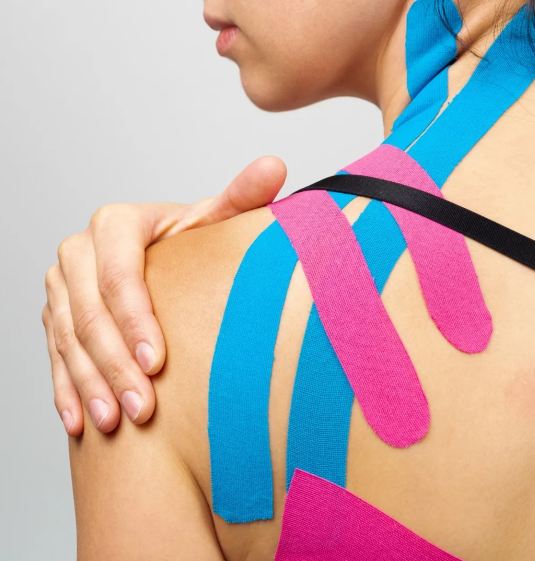
Kinesio taping therapy
Kinesio Taping is a technique designed to work with the body’s natural healing process while providing rehabilitative support and stability to muscles and joints. It can be used to decrease pain, reduce inflammation, and relax overused or tired muscles.
What is Kinesio tape?
Kinesio (Ka knee see o) tape is a flexible tape that supports and stabilizes joints, muscles, and ligaments as they bend, contract, and extend. You may have seen athletes at sporting events wearing long strips of brightly colored tape strategically placed on or near their joints.
Unlike, bulky, elastic bandages, Kinesio tape is not used to limit movement or provide stiff support.
Kinesio tape, also known as kinesiology or elastic therapeutic tape, boasts up to 40 percent elasticity. The tape is typically made of cotton and spandex with a heat-activated acrylic adhesive to keep it in place on the skin.
Physical therapists use various methods of Kinesio taping to apply tension to the skin and muscle. Taping can be used as a rehabilitative tool to:
- Relieve pain
- Reduce inflammation
- Relax overused muscles and joints
- Improve athletic performance
- Stabilize joints
- Support the body’s natural healing process
Kinesio tape takes the stress off the joints by creating a rubber-band effect that modifies movement while supporting muscles and tendons.
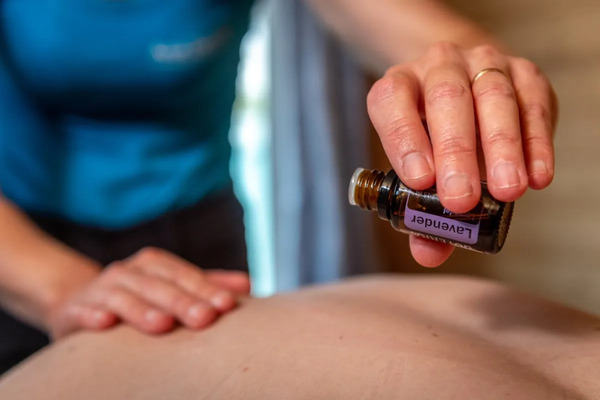
Stress Relief AromaTouch Technique
What is doTERRA AromaTouch technique?
AromaTouch Technique dōTERRA Essential Oils
Developed by doTERRA's own Dr. David K. Hill, the AromaTouch® Technique combines the unique benefits of human touch with the power of essential oils to create an overall wellness experience. The essential oils used in the AromaTouch® Technique were chosen for their individual and combined aromatic properties.
The AromaTouch Technique uses light, consistent touch that creates a beneficial response in the recipient.

Thai Massage
Thai massage is a form of therapeutic touch that differs in many ways from traditional massage. Instead of a massage table, you lie on a mat on the floor while the provider manipulates your body in certain ways to stimulate organs and improve flexibility. In a traditional Thai massage, practitioners use their hands, thumbs, elbows, forearms, and sometimes even their feet to reduce tension.
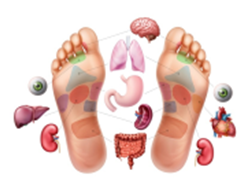
Reflexology
Reflexology is generally relaxing and may help alleviate stress. The theory behind reflexology is that areas of the foot correspond to organs and systems of the body. Pressure applied to the foot is believed to bring relaxation and healing to the corresponding area of the body.
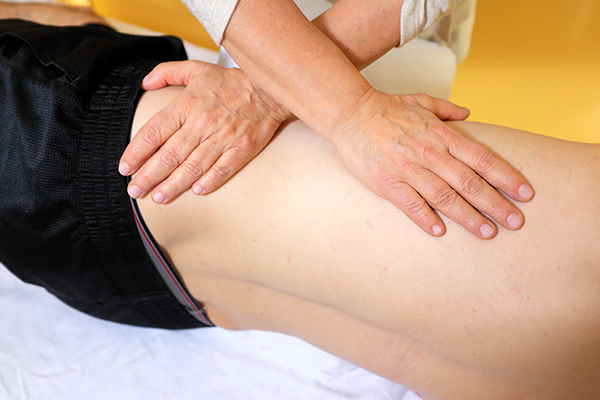
Myofascial release
Myofascial release therapy is a type of gentle, constant massage that releases tightness and pain throughout your myofascial tissues. First, your Massage Therapist provider will locate trigger points, or knots, in your fascial tissues. Then, they'll gently apply pressure until they feel the tension release.
What is fascia?
You can think of fascia like a spider web. The stringy tissue is densely woven throughout your muscles, bones, nerves, arteries, veins and organs. Your fascia is one continuous structure throughout your body. Each part of your body is connected to it in some way. That’s why if there’s a snag in the tissue in one part of your body, it can cause pain in another part of your body.
Normally, fascia is flexible and stretchy. But it’s strong. It provides structural support to your body and protects your muscles. Fascia is usually able to move without any restrictions. When your body experiences any kind of trauma, your fascia loses its flexibility. It becomes tightened and more rigid. The tightness can lead to pain and loss of motion, which can affect your quality of life.

